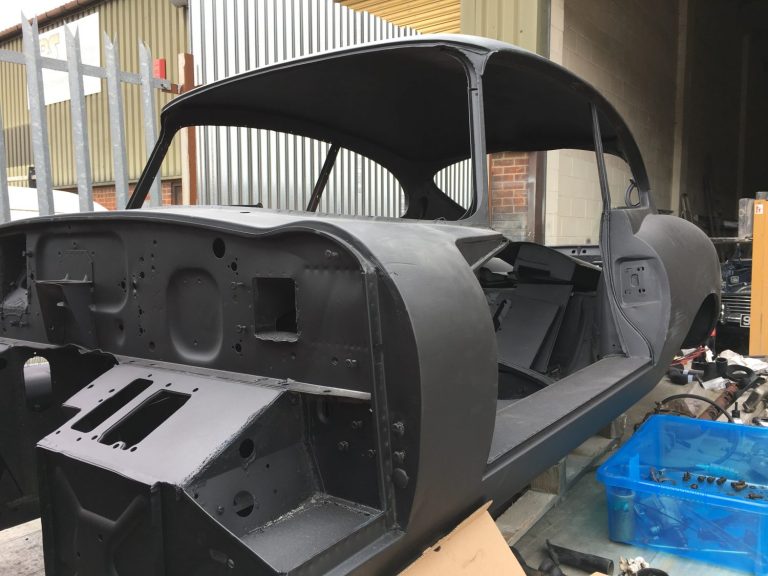
More pictures of the Jensen in prime
As I took in impromptu visit to the paint shop today here we have some more pictures of our Jensen 541S in prime ready for


As I took in impromptu visit to the paint shop today here we have some more pictures of our Jensen 541S in prime ready for

The shell of our racing 1967 Jaguar E-Type has returned having been been wet blasted. Wet blasting, similarly to dry blasting, is the use of

Side by side, enjoying the sunshine here in Suffolk…our 1959 Triumph TR3 and 1974 Triumph GT6 outside Bridge Classic Cars and Bridge MOT Centre.
As I took in impromptu visit to the paint shop today here we have some more pictures of our Jensen 541S in prime ready for paint.
The shell is due to be painted next week so the next set of pictures will be hugely different. It’ll be lovely to see this prototype Jensen 541S back to how it was on day 1.
The shell of our racing 1967 Jaguar E-Type has returned having been been wet blasted.
Wet blasting, similarly to dry blasting, is the use of an abrasive material and compressed air. However, unlike dry blasting, wet blasting uses liquid to enhance the levels of surface finish that can be achieved.
The benefit of including water is a much smoother and more consistent finish.
Wet blasting was developed by Norman Ashworth in the early fifties; the introduction of water was originally as a response to the banning of silica in sand blasting although the benefits of wet blasting quickly became clear.
By lubricating the abrasive particles in a buffer of water Norman found that there was a much more even flow across the surface when using wet blasting systems. This has its advantages in that less damage is done to the substrate and any abrasive action is consistent across the whole surface.
Side by side, enjoying the sunshine here in Suffolk…our 1959 Triumph TR3 and 1974 Triumph GT6 outside Bridge Classic Cars and Bridge MOT Centre.
Bridge Classic Cars are award winning Classic Car Restoration and Maintenance specialists. Your pride and joy is in safe hands with our expert Classic Car Technicians. Take a look at our awards here.
We use cookies to deliver the best possible experience whilst visiting our website. By clicking "Accept All", you consent to our use of cookies, or you can manage your preferences by clicking the link below. You can manage your preferences at any time from out Cookie Policy page.